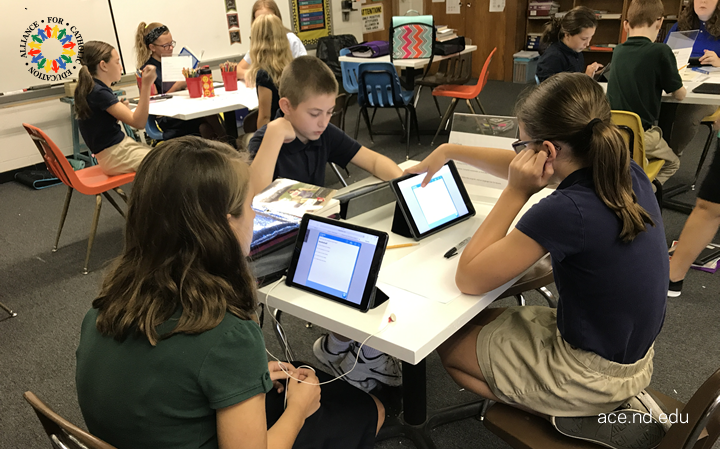
My colleague/mentor/fellow salad-eater Frankie Jones calls herself a CIP fangirl, and she has brainwashed me to be the same. Allow me to explain.
 Frankie serves as both the coordinator of teaching and learning for the Notre Dame ACE Academies AND a faculty member in the Mary Ann Remick Leadership program. In these roles, Frankie's focus is on instructional leadership: what does good instruction look like and how can we ensure that it (and therefore student learning) is happening in our schools?
Frankie serves as both the coordinator of teaching and learning for the Notre Dame ACE Academies AND a faculty member in the Mary Ann Remick Leadership program. In these roles, Frankie's focus is on instructional leadership: what does good instruction look like and how can we ensure that it (and therefore student learning) is happening in our schools?
Through extensive research and collaboration with outstanding colleagues from across the country, Frankie and others have named three Core Instructional Practices–or CIPs–that guide our work:
-
Ensure all students understand the purpose and relevance of every lesson.
-
Frequently and transparently use formative data to assess each student's level of mastery of this purpose and inform instructional decisions.
-
Provide multiple, scaffolded opportunities for students to achieve the lesson's purpose.
Diving into these critical elements of good instruction alongside our whole ACE Academies team has drastically improved my own understanding of what leads to success in a blended classroom (hint: it's not that different from a typical classroom!) and given me the appropriate language to articulate it.
So I want to talk about one of the most common CIP blunders I see in blended classrooms, which is when the teacher loses sight of the lesson's purpose. It is difficult to manage rotations, flexible schedules, personalized learning plans, new sources of data, technology troubles, and/or the many other components of the blended-learning model. But in their earnest and well-intentioned quest to incorporate three stations or give students a more personalized learning experience, many teachers lose sight of what is most important: what specific skill students are supposed to be learning that day.
Let me give you an example: I once visited a classroom where the students were actively engaged in four different activities, one of which was working independently on an adaptive software program. The teacher clearly displayed the activities that were to take place at each station and all of the students were relatively engaged and well-behaved. When the timer went off, the students rotated to a new station and began their next activity. So it was perfect, right?
Unfortunately, wrong. When I asked the students to tell me what they were learning, they said "I'm reading a nonfiction text" or "I'm doing my vocab" - in other words, they were naming the activities they were doing rather than what they were learning from them. When the class was over, I asked the teacher a similar question: what were students supposed to be learning in this lesson or in each of these activities? In response, she named and explained the activities without ever citing a specific, measurable, standards-aligned purpose for any of them.
Losing sight of the lesson's purpose can also take the form of relinquishing too much control to the software programs. When a teacher's plan for the day becomes to simply answer students' questions from their online or independent learning activities, the danger is that students and teachers will lose sight of whether or not the student is mastering daily learning targets that lead towards the accomplishment of a larger goal.
Both of these examples illustrate a serious problem: don't incorporate a third station with a "filler" learning activity just to show your principal you are using three stations. Don't take the backseat to the software programs. Teachers in blended classrooms must be wary of the all-too-common mistake of focusing on what students are doing rather than on what they are learning.
This is, of course, far easier said than done. Good teaching in a blended-learning environment is demanding and complex–but then again, so is all good teaching.
So my advice to teachers? Don't let the new tools and instructional models overwhelm you. Always keep the core components of good instruction at the forefront of your mind as you plan blended lessons.
Did you find this more technical post helpful? Or just plain boring? Let us know in the comments!
 Alliance for Catholic Education
Alliance for Catholic Education
